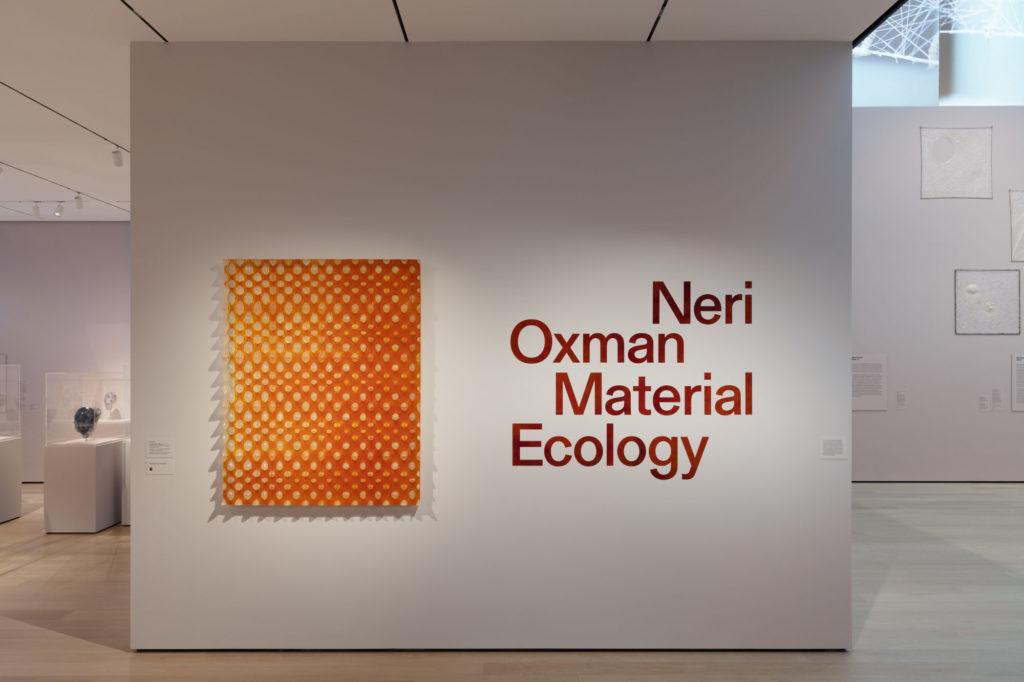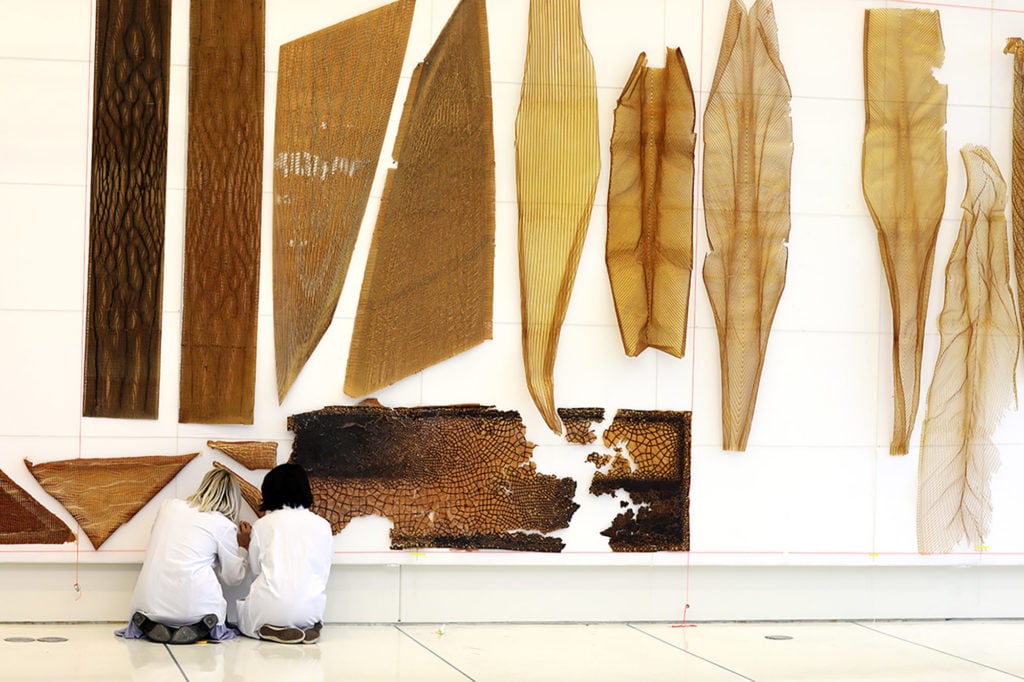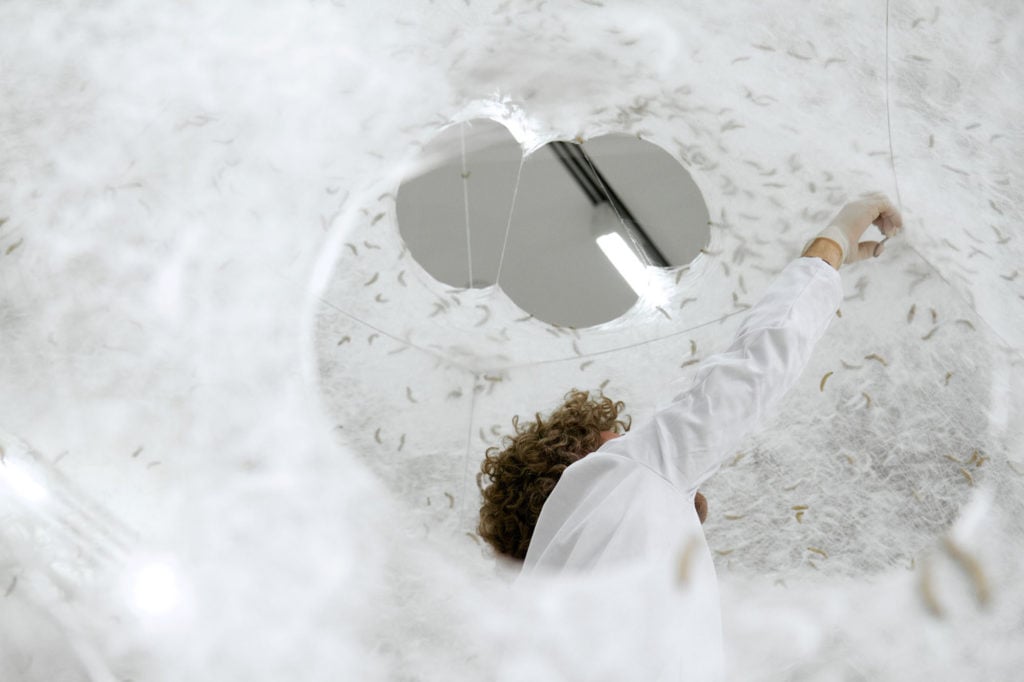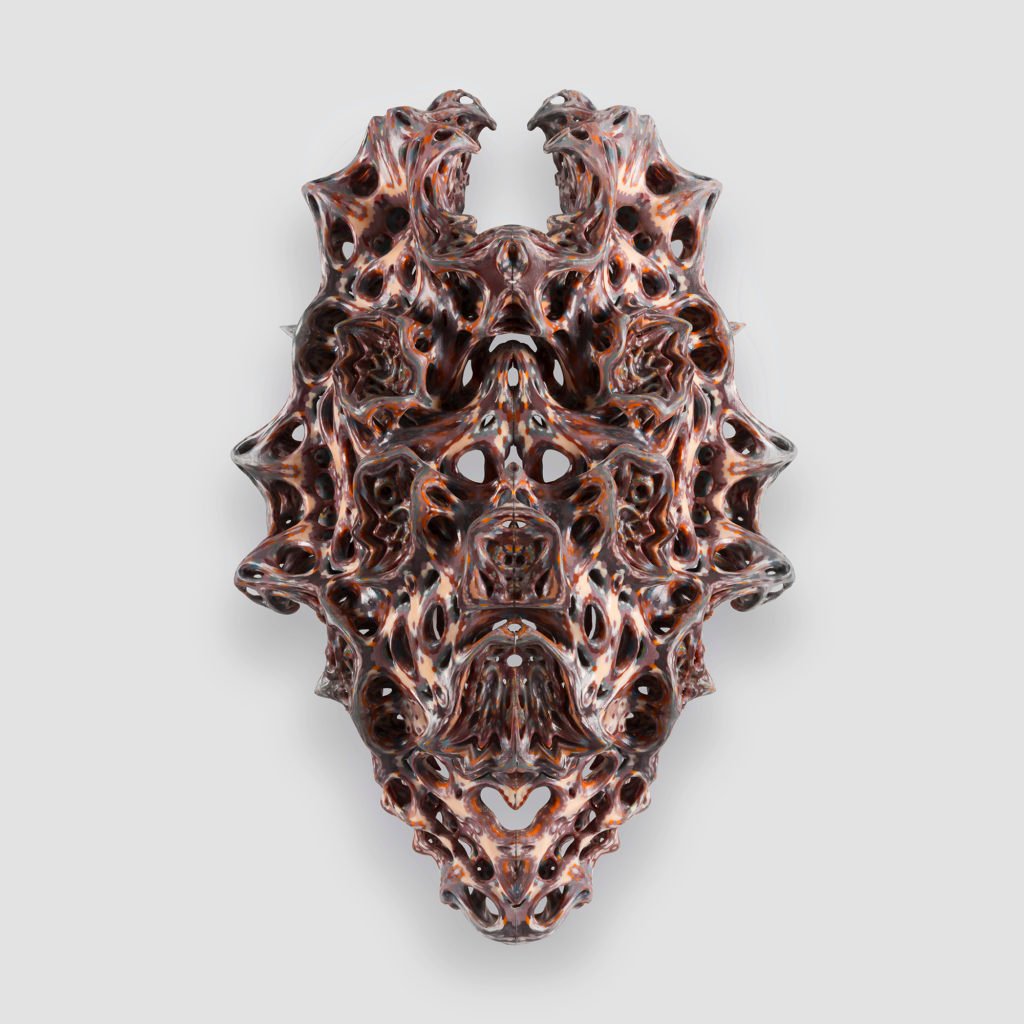Art & Exhibitions
Buildings With Skin and Wearable Digestive Systems: How Neri Oxman Is Revolutionizing the Relationship Between Biology and Design
The MIT professor's new show "Material Ecology" is open now at the Museum of Modern Art.
The MIT professor's new show "Material Ecology" is open now at the Museum of Modern Art.
The designer and Massachusetts Institute of Technology professor Neri Oxman has spent the last 20 years of her career thinking about new ways to live. She pushes at the boundaries between theoretical and functional design, the built environment and the natural one. She has conceptualized workable things that feel like they shouldn’t exist for another hundred years: a wearable digestive system of photosynthetic bacteria that processes solar energy into sugar, for instance, or energy modulating liquid resin tiles inspired by the way the single structures of some organisms perform double or even triple duty—an example of what she calls “materials that think.”
Oxman is an architect by training, but is less interested with the one-upmanship of many architectural vanity projects than she is with answering a question that we, as a society, have heretofore been woefully unable to answer: How can we manage to live on, and with, this planet without obliterating ourselves?

Installation view of “Neri Oxman: Material Ecology.” © 2020 The Museum of Modern Art. Photo: Denis Doorly.
That question is the thrust of “Neri Oxman: Material Ecology,” a survey on view at the Museum of Modern Art. The show is named for Oxman’s work, which combines elements of architecture, design, and biological fantasia—a field so new Oxman named it herself.
Oxman founded and directs MIT’s Mediated Matter group, a kind of interdisciplinary wunderkammer whose research combines digital fabrication and organic design—such as robotically extruded biodegradable plastic alternatives made from the molecular components found in insect exoskeletons, for example. In Oxman’s work, the organic and the engineered are inseparable partners. Her approach is informed by an abiding, reverential deference to nature.

Neri Oxman and the Mediated Matter Group, Aguahoja I (2018). Photo: The Mediated Matter Group. Courtesy of the Mediated Matter Group.
Curated by Paola Antonelli, “Material Ecology” presents an abbreviated primer to Oxman’s work since 2007. It presents seven projects that hew to the conceptual rather than fully realized—proof of what is possible, if we want it. The most recent of these and, based on scale, the most impressive, is Silk Pavilion II, a nearly 20-by-16.5-foot lattice-framed silk cocoon suspended from the ceiling like a massive Noguchi Akari lantern, a joint production of robotic armature and 17,000 silkworms.
Created expressly for the MoMA show, the work is based on an earlier iteration of Oxman’s research into how silkworms respond to changes in their environmental conditions, which allowed for an innovative intervention in the worms’ spinning patterns so that their output emerged in sheets rather than the typical cocoons, effectively enlisting the silkworms as individual 3-D printers. Oxman prefers to think of them as collaborators. “I think perhaps in Silk Pavillon I they were more of a ‘construction worker’ and here they’re a designer,” she said.

Neri Oxman and the Mediated Matter Group. Silk Pavilion (2013). View through Silk Pavilion apertures as the silk worms skin the structure. Photo: The Mediated Matter Group.
If you’re concerned with matters of worm welfare, silk is one of the more brutally harvested animal byproducts. Its traditional production demands that larvae be boiled alive in their cocoons to extract silk thread (for reference, around 50,000 silkworms are destroyed in making a single shirt). Oxman’s process not only demonstrates a more humane alternative, but also suggests what Oxman calls “a matrix of opportunity,” applications that might be relevant, down the road, to other fiber-based materials and constructions.
Almost all of Oxman’s work evinces a philosophical disposition that is perhaps unexpected in discussing things like biomaterials and computational fabrication. She mentions “growing” her designs. She’s given to koans. “What is a building material?” she posits. “Why should a brick be a brick? Something that’s very close to our hearts, my team and I, is to challenge typology through material experimentation. If you end up with a brick, what have you done? Have you made a better brick, or have you made a different brick? And the difference between better and different is something we so care about, and aim to go toward the latter. In our preconception of building material we think of the brick as the ultimate component to build a wall, but maybe the wall, if grown, is made up of entirely different building blocks, and maybe those blocks are DNA, and on and on and on and on, as my grandmother used to say.”

Neri Oxman and the Mediated Matter Group. Vespers (2018). Series 1, Mask 5, front view. Designed for the New Ancient Collection. Curated and 3-D printed by Stratasys. Photo: Yoram Reshef.
In Oxman’s vision, sustainability extends into death. An array of Vespers, a series of 3-D printed glass death masks, are a centuries old practice made new, shot through with plumes of gaseous bismuth and silver and bacteria that are meant to represent the wearer’s final breath, a memento mori startling in its tenderness, which is likely the only time that the bacteria, E-coli, will be characterized that way.
Oxman’s work has a way of communing with nature, augmenting it without exploiting it, a quality that El Lissitzky identified, in the Suprematists’ work, as the difference between “acquiring cognition of nature” and existing as “a limb of nature.” Oxman’s Aguahoja‚ the aforementioned biodegradable plastic alternative developed from abundantly available cellulose, fungi tissue, and fruit pectin, certainly counts as a limb of nature. At MoMA, examples are pinned to the wall so that they resemble a trophy case of sloughed off skins, speculative artifacts from a more verdant future, but materially, you can imagine less abstract potential. Last year, Oxman fashioned it into a freestanding 15-foot structure that resembled an umber chrysalis.

Neri Oxman and the Mediated Matter Group. Totems (2018). Courtesy Neri Oxman and The Mediated Matter Group.
Perhaps the most provocative project included at MoMA are Totems, a set of three 3-D printed columns encasing a bloom of liquid melanin, the pigment that defines the color of skin, hair, and eyes in millions of species, but is also capable of binding metals and regulating thermal energy. Oxman believes that melanin might someday figure into buildings, creating facades that behave like real skin, tanning in the sun to regulate heat and shielding against UV rays. Naturally occurring melanin is currently more valuable by weight than gold.
Oxman’s team’s breakthrough is figuring out how to synthesize melanin by extracting mushroom enzymes and amino acids. The name is exactly right: the three “Totems” are eerie, like a shrine to a capricious god, which is appropriate, considering the cultural weight we ascribe to it, and the pain our preoccupations continue to incite. Oxman’s work suggests a harmonious way of being in the world that has been there all along. “If you care to study you can see it,” she said. “And you have to care,”